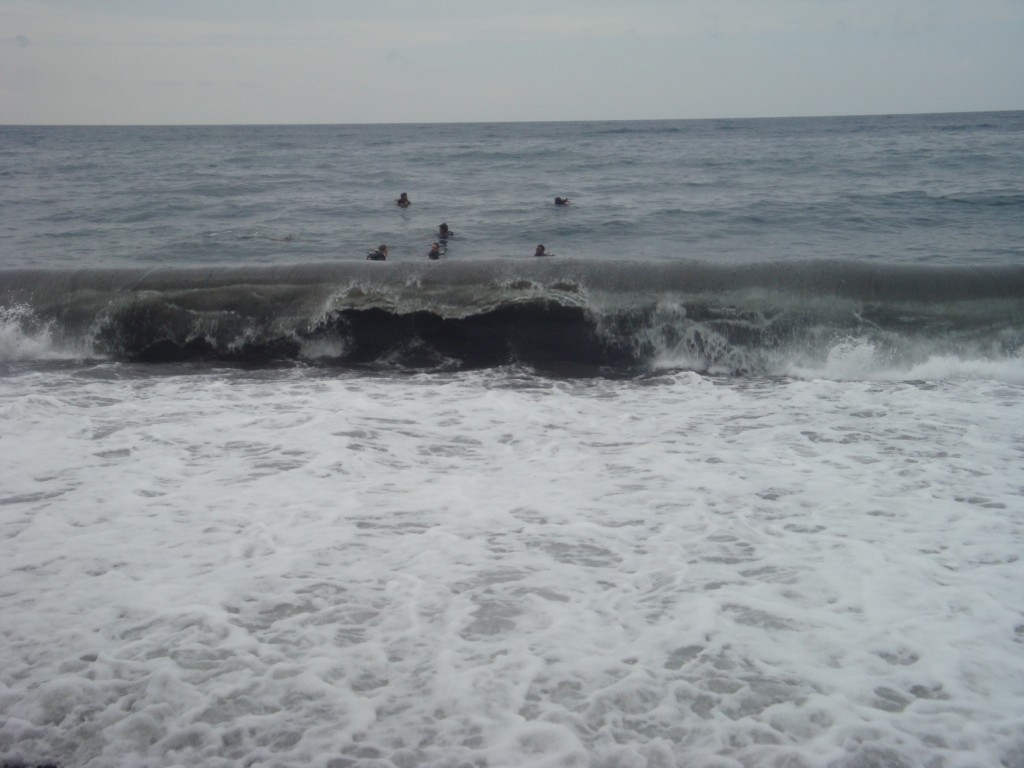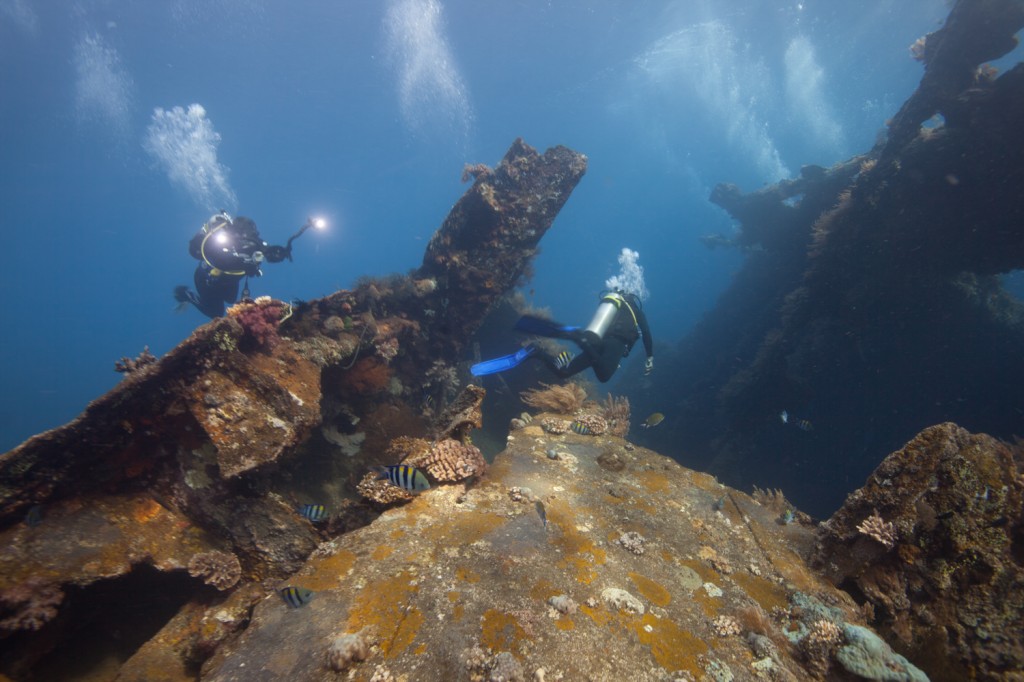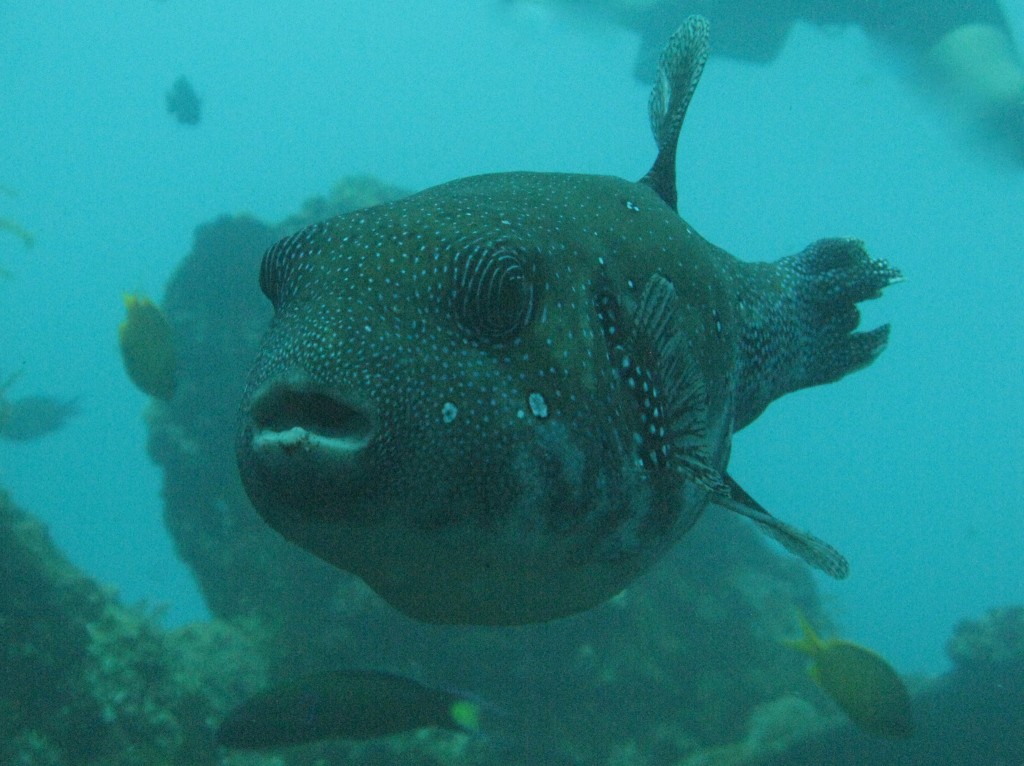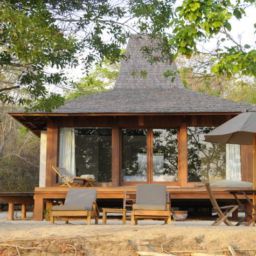The USAT Liberty was a United States Army transport (USAT) ship that was torpedoed by Japanese submarine I-166 in 1942, a few miles out of the Lombok Channel, on its way to the Philippines. Supported by a convoy, the ship made it as far as Bali, where the crew grounded and left the wreck on the east shore, near the small town of Tulamben. Here it stayed for more than 20 years, sitting partially on the beach. Tremors from the 1963 eruption of nearby volcano Mount Agung pushed the wreck wholly into the water, where it now rests between 30 and 100 feet of water, making it one of the most accessible World War II wrecks in the world.
The USAT Liberty
An impressive wreck, at almost 300 feet long, the general state of the Liberty is not great. The combination of the damage done by the torpedo and the passage of time means that the bow section is all but destroyed and separated from the remaining structure. The superstructure is still discernible, but in poor condition, not really allowing for any penetration. The stern is in better condition with most of the structure intact, though with the plating gone, the skeleton of the ship is exposed to divers. As the ship lies on its port side, it can be somewhat tricky to discern what was what on the wreck, which is actually part of the fun. More often than not, you’ll find yourself guessing as you dive in what sometimes looks more like an enormous modern art installation.

The Liberty is a generous dive site, with more than enough wreck to keep you entertained for several dives. The structure has bountiful corals and marine life, with triggerfish, parrotfish and barracudas making frequent appearances. The wreck lends itself well to a multilevel dive; follow the keel out to the deepest part of the wreck and spend some time exploring the bow section, where there are several easy swim-throughs and typically lots of marine life. Afterward, you can make your way back towards the stern and shallower water along the top of the wreck, essentially making a long, swimming safety stop before surfacing. There’s a lot of debris around the wreck, which often houses additional marine life, such as moray eels.


One note: Large waves aren’t unheard off due to the exposed coastline, and combined with the stony beach can make for challenging entries and exits. It’s also common that the weather and wave conditions can change dramatically during the course of a day.
Accommodation in the area is plentiful, as are restaurants and dive centers. It’s also reachable from the tourist area around Denpasar, including Kuta and Ubud, and most dive centers in these areas have day trips to Tulamben.


